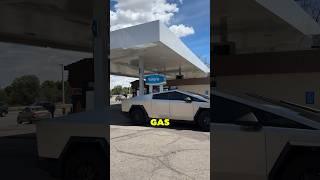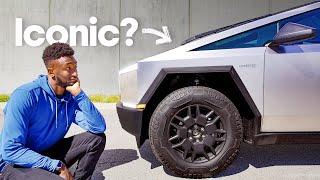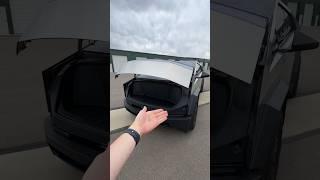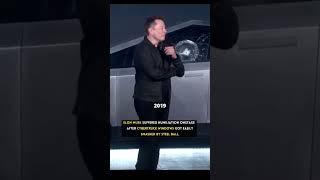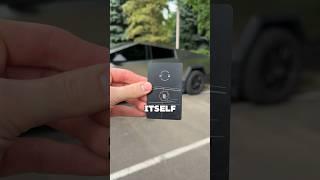Ford's electric vehicle sales have taken a major hit, falling 31% in Q2 2025. With major drops in Mustang Mach-E, F-150 Lightning, and E-Transit van deliveries, questions are rising about Ford's EV future. Meanwhile, Tesla continues to dominate the electric car market with strong Model Y sales and unmatched infrastructure. In this video, we break down Ford's EV struggles, rising hybrid demand, and whether the automaker can realistically compete with Tesla in the years ahead.
Stay tuned for a full analysis of the EV landscape, Ford’s next moves, and what this means for the future of electric vehicles.
#FordEV #Tesla #ElectricVehicles #EVNews #F150Lightning #MustangMachE #TeslaModelY #FordVsTesla #EVMarket #CarNews #AutoIndustry #EV2025 #HybridCars #ElectricTrucks #FordSales
CNN, Fox News, MSNBC, ABC News, NBC News, CBS News, PBS NewsHour, Bloomberg News, CNBC, The New York Times, The Washington Post, NewsNation, Reuters, Associated Press, USA Today
In the latest sign of shifting dynamics in the electric vehicle market, Ford has reported a dramatic 31% drop in its U.S. EV sales for the second quarter of 2025. The decline affects nearly all models in Ford's current electric lineup, from the Mustang Mach-E to the F-150 Lightning and the E-Transit van. And while these numbers reflect serious challenges for Ford, they also underscore Tesla’s ongoing dominance in the EV space.
Let’s break down the numbers.
Ford sold just over 38,000 electric vehicles in the second quarter, a significant slide from the same period last year. The Mustang Mach-E, once positioned as a strong Tesla Model Y competitor, dropped by about 20%, moving just over 10,000 units. The F-150 Lightning, Ford’s electric version of America’s best-selling truck, declined by 26%, with fewer than 6,000 units sold. But the biggest plunge came from the E-Transit commercial van, which saw a staggering 88% drop—from 3,400 units last year to just 418 in the second quarter of 2025.
So, what’s behind this sharp fall?
First, inventory issues played a significant role. Ford struggled with model year transitions, which meant lower availability at dealerships. In April, the Mustang Mach-E had just nine days of supply, and the Lightning had only 19 days. That kind of shortage makes it nearly impossible to meet demand, even if interest is there.
Second, consumer demand appears to be softening. After several months of aggressive discounting, Ford has begun to pull back on incentives. With fewer deals on the table, and rising interest rates making financing more expensive, many buyers are holding off.
Then there's the policy landscape. The future of federal EV tax credits is uncertain, and some state-level incentives have been reduced or eliminated. As a result, the cost advantage that once drove EV sales is shrinking—at least for now.
But while EV sales are falling, Ford is seeing strong growth in another area: hybrids.
Hybrid sales surged over 30% during the same period. Buyers seem to be gravitating toward vehicles that offer some of the fuel efficiency and technology benefits of EVs, without the range anxiety or charging infrastructure challenges. The Ford Maverick, a compact hybrid pickup, is selling particularly well—helped in part by special employee pricing and promotional campaigns.
It’s worth noting that Ford’s overall U.S. vehicle sales in April rose by 16%, driven largely by trucks and hybrid models. So while EVs are down, the company isn’t necessarily losing ground in the broader automotive market.
Ford’s EV unit, known as Model e, lost around $5 billion in 2024, and further losses are expected this year. However, the company is not backing away from its electric ambitions. Ford is investing in the next generation of EVs, including a new, more affordable electric truck slated to launch in 2027. CEO Jim Farley has said that future EVs will be built with a different cost structure—leaner, more competitive, and aimed squarely at high-volume segments.
This leads us to the elephant in the room: Tesla.
As Ford’s EV sales tumble, Tesla continues to lead the U.S. electric vehicle market by a wide margin. Tesla’s Model Y remains the best-selling EV in the country and one of the top-selling vehicles overall. Even without major model refreshes, Tesla benefits from its extensive Supercharger network, streamlined production, and strong brand loyalty.
While Ford and other legacy automakers grapple with transition costs and fluctuating demand, Tesla’s scale and efficiency give it a critical edge. And with upcoming models like the next-gen Roadster and continued software and AI integration, Tesla’s position is likely to remain strong in the near term.
That said, the EV race is far from over. The market is still evolving, consumer preferences are shifting, and technological innovation is ongoing. But for now, Ford is recalibrating—focusing on hybrids and profitability while refining its electric future.
Stay tuned for a full analysis of the EV landscape, Ford’s next moves, and what this means for the future of electric vehicles.
#FordEV #Tesla #ElectricVehicles #EVNews #F150Lightning #MustangMachE #TeslaModelY #FordVsTesla #EVMarket #CarNews #AutoIndustry #EV2025 #HybridCars #ElectricTrucks #FordSales
CNN, Fox News, MSNBC, ABC News, NBC News, CBS News, PBS NewsHour, Bloomberg News, CNBC, The New York Times, The Washington Post, NewsNation, Reuters, Associated Press, USA Today
In the latest sign of shifting dynamics in the electric vehicle market, Ford has reported a dramatic 31% drop in its U.S. EV sales for the second quarter of 2025. The decline affects nearly all models in Ford's current electric lineup, from the Mustang Mach-E to the F-150 Lightning and the E-Transit van. And while these numbers reflect serious challenges for Ford, they also underscore Tesla’s ongoing dominance in the EV space.
Let’s break down the numbers.
Ford sold just over 38,000 electric vehicles in the second quarter, a significant slide from the same period last year. The Mustang Mach-E, once positioned as a strong Tesla Model Y competitor, dropped by about 20%, moving just over 10,000 units. The F-150 Lightning, Ford’s electric version of America’s best-selling truck, declined by 26%, with fewer than 6,000 units sold. But the biggest plunge came from the E-Transit commercial van, which saw a staggering 88% drop—from 3,400 units last year to just 418 in the second quarter of 2025.
So, what’s behind this sharp fall?
First, inventory issues played a significant role. Ford struggled with model year transitions, which meant lower availability at dealerships. In April, the Mustang Mach-E had just nine days of supply, and the Lightning had only 19 days. That kind of shortage makes it nearly impossible to meet demand, even if interest is there.
Second, consumer demand appears to be softening. After several months of aggressive discounting, Ford has begun to pull back on incentives. With fewer deals on the table, and rising interest rates making financing more expensive, many buyers are holding off.
Then there's the policy landscape. The future of federal EV tax credits is uncertain, and some state-level incentives have been reduced or eliminated. As a result, the cost advantage that once drove EV sales is shrinking—at least for now.
But while EV sales are falling, Ford is seeing strong growth in another area: hybrids.
Hybrid sales surged over 30% during the same period. Buyers seem to be gravitating toward vehicles that offer some of the fuel efficiency and technology benefits of EVs, without the range anxiety or charging infrastructure challenges. The Ford Maverick, a compact hybrid pickup, is selling particularly well—helped in part by special employee pricing and promotional campaigns.
It’s worth noting that Ford’s overall U.S. vehicle sales in April rose by 16%, driven largely by trucks and hybrid models. So while EVs are down, the company isn’t necessarily losing ground in the broader automotive market.
Ford’s EV unit, known as Model e, lost around $5 billion in 2024, and further losses are expected this year. However, the company is not backing away from its electric ambitions. Ford is investing in the next generation of EVs, including a new, more affordable electric truck slated to launch in 2027. CEO Jim Farley has said that future EVs will be built with a different cost structure—leaner, more competitive, and aimed squarely at high-volume segments.
This leads us to the elephant in the room: Tesla.
As Ford’s EV sales tumble, Tesla continues to lead the U.S. electric vehicle market by a wide margin. Tesla’s Model Y remains the best-selling EV in the country and one of the top-selling vehicles overall. Even without major model refreshes, Tesla benefits from its extensive Supercharger network, streamlined production, and strong brand loyalty.
While Ford and other legacy automakers grapple with transition costs and fluctuating demand, Tesla’s scale and efficiency give it a critical edge. And with upcoming models like the next-gen Roadster and continued software and AI integration, Tesla’s position is likely to remain strong in the near term.
That said, the EV race is far from over. The market is still evolving, consumer preferences are shifting, and technological innovation is ongoing. But for now, Ford is recalibrating—focusing on hybrids and profitability while refining its electric future.
- Category
- Inventory
Be the first to comment

